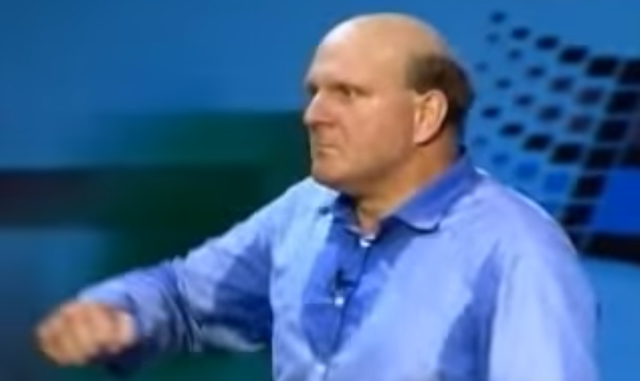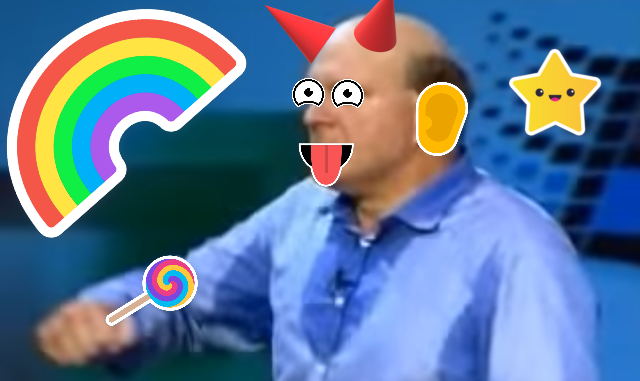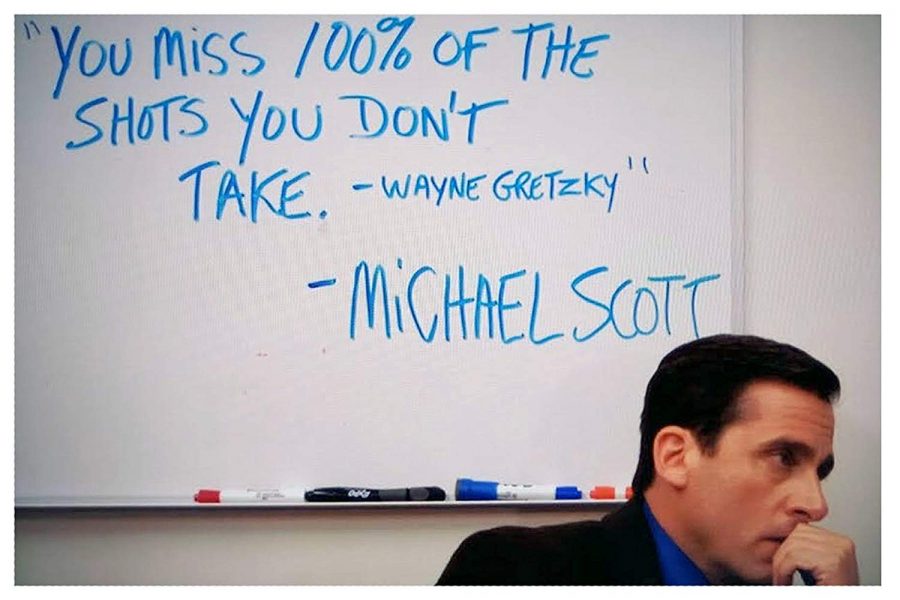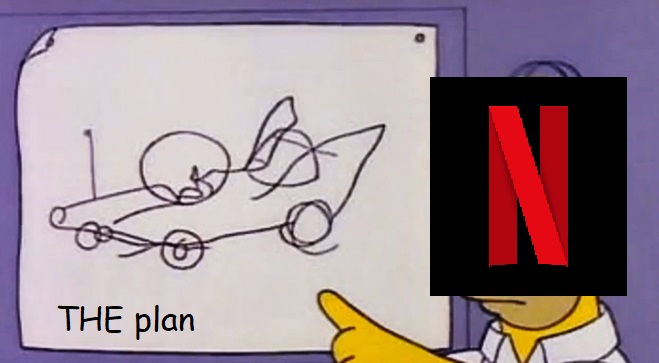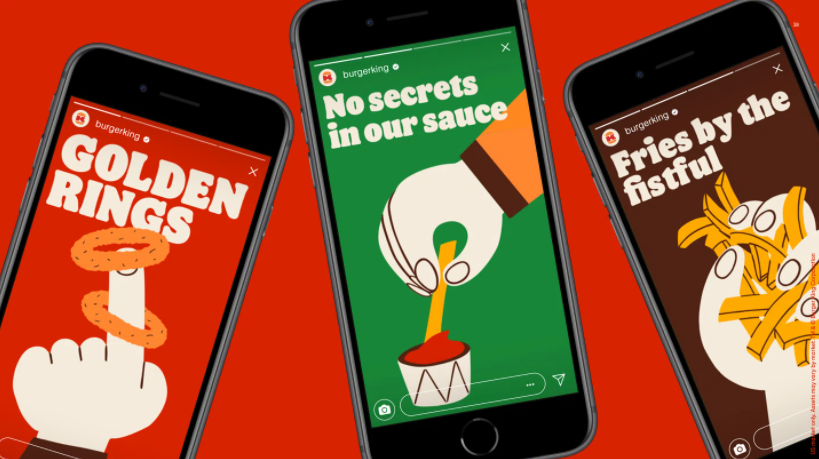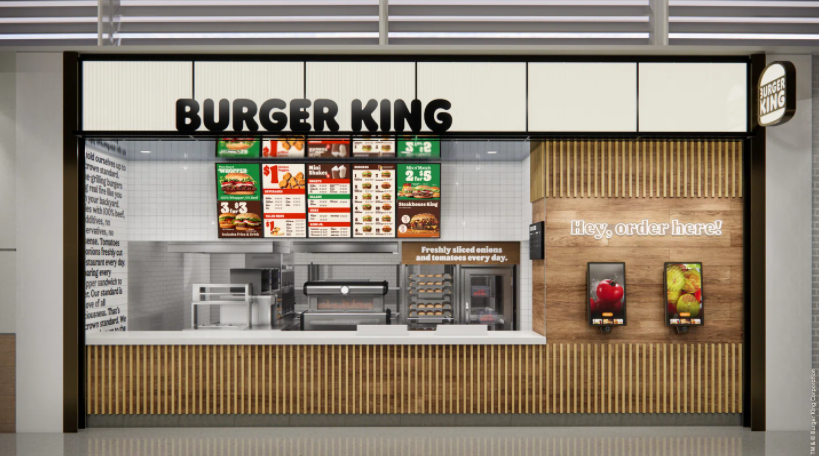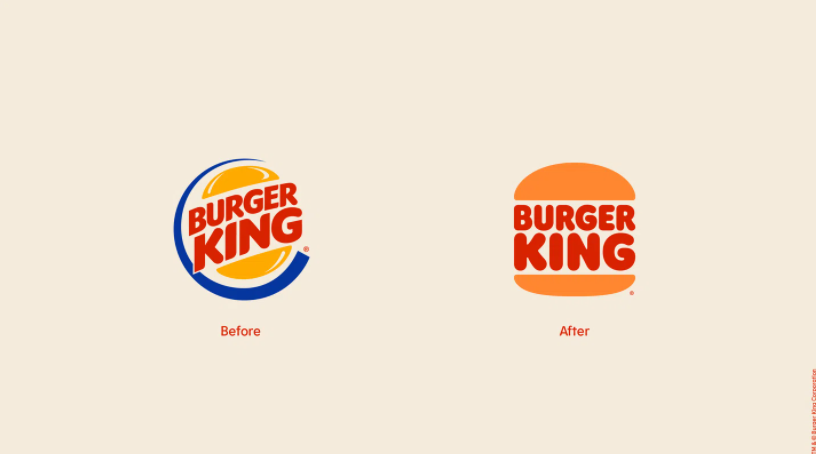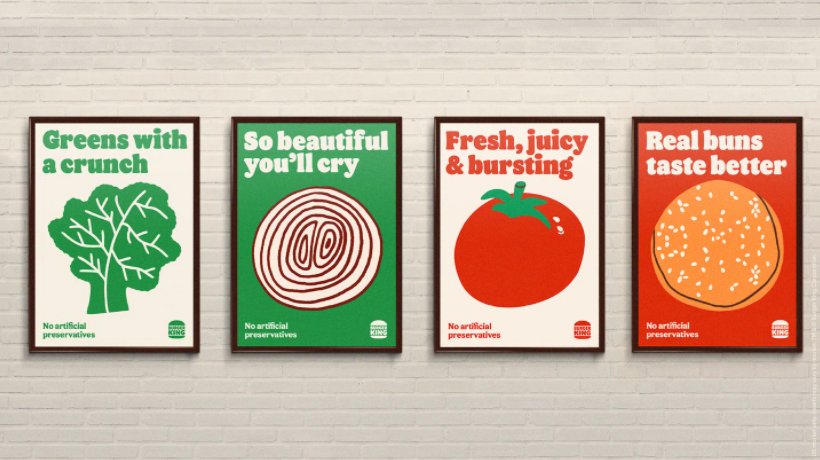
Yes, this is another post about Microsoft and its competitors. IF you don’t like a long read then jump to the bottom of this post, but if you instead enjoy reading what’s cranking my gears get comfy and make some coffee or tea.
It’s the summer of 2008 and everything is starting to crumble into pieces on a global scale. Plenty of business people are glued on their Blackberry witnessing the stock market crashing live, they’re all sweating and they don’t know what’s going on despite their knowledge or whatever economic book they read at college isn’t making any sense at all. Lehmann Brothers is out, gone, the company was left with any chair to sit on when the music stopped. Who is next? Bank Of America? No, too big too fail, but so they said about LB and AIG. The world is collapsing, it’s another black Monday-Thursday-whatever all over again. It’s down to the seconds to pass the historical TARP bailout or the western world is gone.
If there’s one thing we’ve learnt from the 2008 financial crisis or any other major similar event of the past, it how the information is distorted when information channels are few. We can imagine on a X/Y axis the inverted trend taking place: the more information channels we have, the more the tragedy seems different from when it was told. But this didn’t stop bad things from happening again, and we won’t discuss about Silicon Valley Bank or Credit Suisse; we will discuss about what it takes to become relevant again even if your name was never forgotten.
Flashback
This is the story of how Microsoft got its groove back and how ‘maybe’ the public will perceive it equal to Apple, but it’s not the case; however, it’s worth the try to explain why we find it difficult to place together apples and pears. Pun intended. So, trying to elaborate something far too fetched and philosophical, I’ll try my best to illustrate how the situation is and how it might be for the next ten or so years.
In my February’s post I wrote about the missed opportunities companies like Microsoft have lost to lead the tech race of consumer’s products. This feels like a second part to the original post and I’d like to find closure along these lines to close this chapter. I don’t like to beat -too much- the dead horse but in order to write a clear thought you’ll have to bear with me in this journey.
When tech companies from Silicon Valley started to become big across the 70s to the beginning of the 80s, very few would have predicted the establishment’s strategy in a world where Moore’s Law was far-far away. So, if you look back at that famous and alleged statement attributed to Bill Gates: “68kb ought to be enough for everybody”, little he knew how wide the horizon was expanding beyond his office desk.
As Apple -the underdog at the time- challenged the world and especially MS, there was no economical predicament to how big a company could and would expand in the tech sector let alone in its financial aspect. With MS establishing itself for decades as the king of the hill of the home PC and software solution, others were swept and dramatically beaten to the punch of chips and transistors. There was no second place in this business unless you carved yourself a niche steady place on the market, and that’s what Apple did in order to stay competitive.
For years Microsoft stood still overshadowing the global computer market with Windows and eventually its web browser Explorer. Whether it was sheer luck of sheer theft, the windows system felt the most sensible solution for the PC consumer segment, giving the ability to introduce a new addition to the appliance set inside millions of homes everywhere. The concept of a piace of technology being used by everyone that wasn’t a television was the star of the starlet of the 80s and the celebrity of the 90s.

The decade of the 1980s was for many the age of consumerism and the need to have more, to buy what the world had to offer without putting boundaries from where it came from. Buy Sony’s Walkman, buy American computers, buy German cars, and so forth. This was fueled by an increasing spending in the west that pushed public debt to whole new heights, credit cards were in everyone’s wallet and travels cheques were used like sugar in sodas. It was this decade that allowed companies like Microsoft to expand their operations and retinue abroad along with other US corporations like Nike or McDonald’s.
After two Ronald Reagan’s presidencies, Rocky 4, and the collapse of the Berlin Wall in Europe, things were about to change for Microsoft. The reunification of the two Germanies and the collapse of the Iron Curtain with Russia in 1991, were the preambles of a new free range of market ambitions through product placement where no family had ever seen a PC. Imagine all the countries that once where part of the USSR: Poland, east Germany, Czechoslovakia, Hungary, the Balkans, now representing a fresh opportunity to provide Windows as their standard operating system (talk about communism…).
So, Bill Gates and his pals at Microsoft were celebrating a whole new market to conquer and control from Berlin to Moscow, with millions of new MS users to become and to stay for quite a long time. It’s the 1990s and internet is happening slowly but everywhere, connecting the dots from country to country with virtually no boundary set in the middle.
What about the apple?
Meanwhile the PC world was growing in this period of time, Steve Jobs and Apple divorced in 1985 and ultimately he set his eyes on the next venture with a new company called Next to provide quality computing to a niche market. This is the second attempt Jobs planned in the tech business by carving out his own very spot next to MS, there was no doubt Apple in the first place would try to reach their numbers and Bill Gates was sure of that.
In 1996 next would close his run after just only ten years of activity trying to place across offices and universities practical but expensive computers. After all, what could Next machine do compared to Microsoft? We have to admire Steve Job’s resilience in his quest to bring quality computers onto the consumer market; however, PC at the time weren’t cheap to buy and trying to justify an Apple or a Next product for the average family was a very hard task to accomplish.
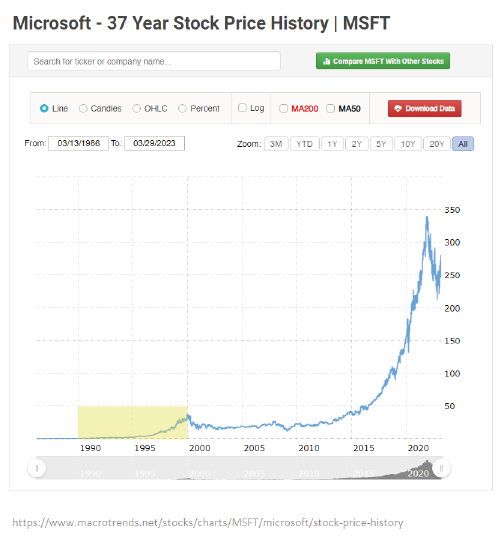
It is the 90s that saw Microsoft acknowledging its popularity with a constant growth that begun shy in the first half, only to jump high in the second half of this decade with its stock value steady upward. But it wasn’t on quality that Bill Gates made his fortune, it was about quantity and the number of Windows and Explorers copies installed and sold in the international market. The monopoly of cutting out any competitors made the fortune MS is now enjoying.
The release of Windows 95 and later of Windows 98 on the computer market were the one-two steps to a major jump toward the closing of the century, and onto many new things for the upcoming new one. Despite the poor reception of Windows ME and Windows 2000, Microsoft will turn the tables around in its favor releasing the acclaimed Windows XP at the end of 2001.
It is at this point that ten successful years of Microsoft made the public believe no other company could surpass that or even establish a small parallel market. The 70s and the 80s were over, there was no more room to experiment in every direction and the age of the monopoly was at its peak with MS dictating the rules and overshadowing everything. However, a twice-defeated Steve Jobs received a third chance when in 1992 then Apple CEO John Sculley was pushed to resign from the company. Cupertino mama had enough of cheap tricks coming from cowboy executives trying to split the company to make personal profits. Apple wanted its status quo back of niche computing for the few selected able to understand its flavor, away from the store shelves, it wanted to be more than unique anche they understood the only man able to turn the tables would be Steve.

Apple would do things differently as Jobs came back and this time was different with the next ten years dedicated to a whole new product philosophy; it was about creating not just a line of products but a creed to good product to cater the best of the best technology could provide to millions of users. This didn’t arrive until the second half of the 90s when things started to turn around for the best, but first Apple had to come out of its jungle understanding they’ve been chasing a repetitive design approach for years that never could distinguish them from a PC.
The various Macintosh desktop like the Centris, LC, PowerMAC, never really stood out from the crowd of other similar computers unless you’d get close enough to spot the colorful apple logo; beside, they all look white and boxy or greish, virtually indistinguishable from a Windows PC. This was a major epiphany for Steve Jobs, he understood that in order to let people experience the true niche computer flavor he had to fool the eye first.
Overtaking
I’ve never bought an Apple product except for the white wired headphones for the iPhone I still own today; it was one of the best tech purchase I’ve made in a long time and its quality reflects the $40 price tag. People around me grew very fond of Apple’s product from smartphone to notebooks, the iPod was very seducing at the time and its cost too forbidding for my pockets. But purchasing such a product meant you’d be set for many years for the quality and reliability beside the design aesthetics. Nonetheless, when Apple started developing its own ecosystem to encourage users in getting more of their products, something funny was about to happen.
While Microsoft continued to expand after its success of Windows XP, the company also tried to compete with other products by entering the music industry with their Zune player in 2006 and with the Windows phone in 2010. The public and the tech press wasn’t sure what statement MS wanted to pass by competing very late with two products Apple already established years before; in fact the iPod had been around since 2001 and the iPhone was launched in 2008
I can’t stress enough the fact how big companies trying to lead the markets at all costs often stumble in the process only to chase the competition. Why is that, why does it happen? Microsoft has been leading the computer market for decades, the virtual monopoly of PC with their pre-installed OS provided the company with a sense of omnipotence that has the tendency to make you blind over the simplest things under your nome. MS believed their millions of users already owning a PC would automatically buy Zune or the smartphone out of a consumer loyalty taken for granted.
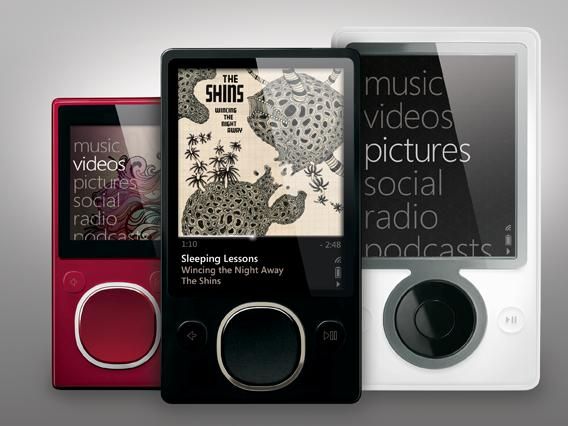
By this time Apple had concluded the 90s with its cycle and pushed the company onto the highest it’s ever been and able to print money. The iPhone, iPod, the Macbook, the Macintosh, they all came full circle in establishing not just a series of powerful products but the alternative to a market where Microsoft had been leading for far too long. Jobs knew that it was necessary to spawn a new set of eternal rules for Apple with the creation of products well above the market average. When you pick up a Macbook there’s immediately a sense of tasteful thickness and quality other brands don’t convey, you can feel this product was developed on another planet far enough to share virtually nothing with its competitors.
We all know that buying Apple’s products is the equivalent of being chauffeured to work rather than taking your car or riding the subway. You’re getting an experience that goes well beyond the average PC quality and all at a cost; this is what establishes the company apart from the rest of the hardware and software by outsourcing nothing outside its walls. Steve Jobs made it back 110% from that distant day of 1985 when he was expelled from Apple by Sculley. Design became the main focus behind every iPhone or Macbook developed in Cupertino with a unique approach to innovation no other business had ever undertook. Sadly Steve Jobs passed away in 2011 after a long health battle against cancer, and for many Apple peaked during his presence establishing his enterprise as a beacon of design principles amidst a foggy sea.
A sunset
Microsoft continued along its path despite the lawsuits it faced regarding their OS monopoly over the PC market. The disappointment of Windows Vista in 2007 and Windows 8 in 2012 didn’t help the company to win sympathies nor the required confidence to win public’s in addressing the main issue: where is MS going with this? Thankfully the stride of poor OS was interrupted with Windows 7 in 2009 and Windows 10 in 2015, two solid programs that managed to makeup for their previous antagonists and their lackluster effects on the consumer market. Or did they?
Windows Vista was a sore eye for Bill Gates with the OS following the very successful Windows XP after years of user happiness. Although we could manage the ferocious permission request of administration privileges Vista kept asking and mesmerized by the desktop activity slider; the punch in the gut was Windows 8.0 that suddenly alienated millions of PC owners around the globe. Its tablet-like interface wasn’t intuitive because the majority of the public out there at the time didn’t have enough experience using a tablet, let alone an interface that pushed the user to leave keyboard and mouse. To make things more challenging, Windows 8 featured a button on the taskbar switching back to the old desktop and Start button setting further confusion among the userbase, and as a OS this 8th iteration was pretty much disliked by a large portion of users.
Microsoft had chocked itself in the second half of the 2000s letting precious time and resources go to waste in order to create yet another product either too early for the markets, or too weak to grab enough attentions from the users. In fact it was pretty obvious Microsoft rushed Windows 8 wanting to emulate Apple’s iPad, as if suddenly desktop users didn’t matter anymore or would disappear the day after. It’s at this point -once again- that the peculiar thought crossed my mind:”Has Microsoft given up? Did they reach peak performance?”. Just like any human being, society, empire, they all reach their maximum height at a certain historical moment and after that they cannot continue any longer slowly riding towards their sunset.

In the 1971 sci-fi movie THX-1338 by George Lucas, at the end of the story the protagonist Robert Duvall emerges from having lived in an underground city his entire life seeing for the very first time the sun and the sunset. Perhaps we can use this analogy to describe Microsoft’s journey after all these decades, where it’s the end of an era for the company and walking towards the sunset is often a metaphor for ‘the end’; however, in the movie we don’t know if the protagonist survives the night but we know that when the night comes we take such time to think about the day and all that’s happened.
Microsoft isn’t done, it persists. Despite the continuing rise of its stock value until today, the company found it extremely challenging to enter the new century much like the new kid on the first day to school: awkward, stared, alienated, judged, watched by many, estranged, what now. This is probably how Microsoft felt entering the 2000s with the whole world asking:”What many great things will MS bring us?”. No pressure, except a lot of it. But sometimes great and enormous pressure is able to create precious stones.
Secretly
After developing all kinds of applications and services ranging from the home consumer to the business market, Microsoft had created for itself a lengthy portfolio across several decades forging the PC world. On the other hand, Apple has continued a relentless pursuit towards its vision of design perfection that spawned a ‘religion’ off its brand, a dedication to extensive attention to the user experience and to the results it delivers. Ken Kocienda writes about this process in his 2018 book Creative Selection: Inside Apple’s Design Process During the Golden Age of Steve Jobs, explaining the detailed attention in the selective process of building up the digital keyboard for the use while developing the iPad, there Jobs would constantly put his team under pressure so they would understand and the intricacy of their design to the minimal aspects.
It would be too late now for Microsoft to turn around and begin a similar process of extensive user research over their product development; but why? What Apple stood for was ahead of its time on a grand scale. Creating hardware and software for a niche markets when computers barely started entering homes and offices was a dare, but the great gamble paid off when the market was young and naive. Today there’s virtually no space for the type of innovation Apple provided over the last 20+ years, now they’re off to healthcare, VR, and payment solutions; the iPhone cannot receive any major significant improvement anymore and their Macbooks won’t get any slimmer otherwise they will lose purpose from the technological point of view.
After a long and zig-zag journey of OS publishing, an under performing web browser, an ignored search engine, Microsoft decided it had enough of the second place and in secret the company decided to invest in an industry almost forgotten by the media and the public, let alone by the tech industry. Perhaps at Redmond WA somebody slammed their fists on the table during a meeting scaring the nerds into a corner of the room, and perhaps it was a good thing if this happened. Someone had reached peak disappointment levels and proposed to invest on Artificial Intelligence while everyone looked at that person in the most alienating way. Whether this is the truth or not, something clicked inside MS’ head to move over new pastures where no grazing have yet to be made.
The Covid-19 pandemic played a key factor for many companies to rethink their corporate strategies beside their smart working solutions. Microsoft realized that with their empty offices they could focus on working on something very secret, splitting the projects and work loads among employees and teams working from home and lessening the risks of internal leaks. By having different units working on the same project they won’t know what the great picture is really about.

In the fall of 2022 the press and the tech industry were getting drunk on the Metaverse juice with all its possible applications and side quests. Articles upon articles were published that year praising the next dimensions of the internet (I did too :)) and its integration with blockchain technologies. The party ended when in this time frame we start seeing odd publication of warped images generated by AIs of different nature: DallE, Stable Diffusion, Midjourney, entered the ring as heavyweights ready to disrupt everything digital. But wait, there’s more! ChatGPT followed suit upsetting all copywriters, SEOs, social content managers, and this was just the beginning.
Microsoft didn’t care but it would very unwise of them not anticipate this within a carefully planned strategy; after all, their social platform LinkedIn would only benefit from task and content publishing automation by removing obsolete Monday morning selfies posts about ‘self-empowerment’ and awful self quoting motivational e-cards from boring unoriginal users. But this isn’t about the sprinkles or the icing on the cake, this is about the recipe that holds together the ingredients and how they will eventually taste.
The surprise continued when in January 2023 more news were released about MS and AI with an understanding that it would impact several IPs such as their browser Edge, Bing, and eventually spawning a new method of assisting users with the power of artificial intelligence when using Microsoft Office. Clippy 2.0 if you remember that little animated assistant on the top-right corner of your screen. As the weeks went by with more information bouncing across websites and social platforms, we faced the uncomfortable truth of the rapidly growing use of AI. But that didn’t matter, Microsoft hand chained up a series of investments and deals with ChatGPT and OpenAI enough to secure a leading role and a major leap ahead of Google, Meta, Apple. Suddenly MS isn’t stared at like the new kid in school anymore.
